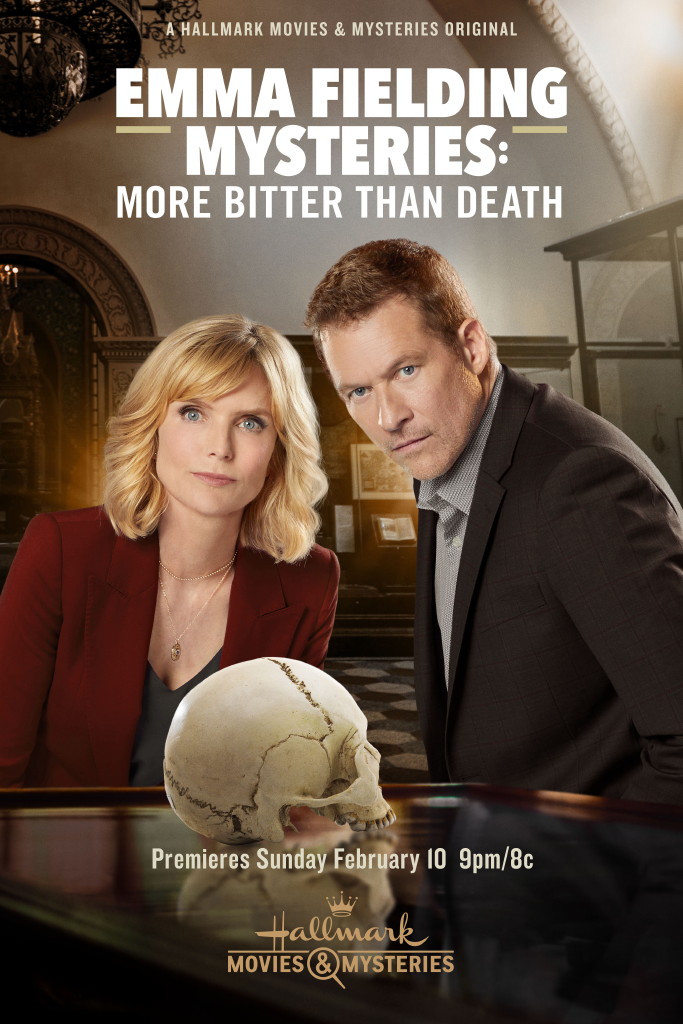By Rick Gables
Hallmark Movies & Mysteries will premiere its new original movie Emma Fielding Mysteries: More Bitter Than Death on Sunday, Feb. 10, at 9 p.m. ET/PT. Courtney Thorne-Smith, James Tupper and Mark Valley star. The movie is the third installment in the franchise. While hosting the annual gathering of the Association for the Study of American Archaeology at Kenzer College, Emma Fielding (Thorne-Smith) is thrust into the midst of a murder mystery when the president of her organization is poisoned on the eve of announcing her successor. With many of the leading archaeologists present having expressed their entitlement to the presidency prior to the murder, Emma and FBI pal Jim Conner (Tupper) have plenty of likely suspects from which to choose, including Duncan Thatcher (Valley), the rather self-important archaeologist who Emma was not expecting to attend, and who just happens to be her former fiancé.
Won’t You Be My Neighbor?, the acclaimed documentary, will debut Saturday, Feb. 9, at 8 p.m. ET/PT on HBO. This documentary takes an intimate look at America’s favorite neighbor, Fred Rogers, telling the story of a soft-spoken minister, puppeteer, writer and producer whose show was beamed into homes across America daily for more than 30 years. In his beloved television program, Mister Rogers’ Neighborhood, Rogers and his cast of puppets and friends spoke directly to young children about some of life’s weightiest issues in a simple, direct fashion. There hadn’t been anything like Mr. Rogers on television before, and there hasn’t been since.
PBS will premiere American Experience: Sealab on Tuesday, Feb. 5, at 9 p.m. ET (check your local listings). Sealab tells the mostly forgotten story of the U.S. Navy’s daring program that tested the limits of human endurance, revolutionized the way humans explored the ocean and laid the groundwork for undersea military missions to come. In the spring of 1964, Scott Carpenter, already famous for being the second American to orbit the earth, was preparing for a new mission, not into space as an astronaut but into the sea as one of the Navy’s newly-minted “aquanauts.” Divers who attempted to chart the ocean’s depths faced barriers that had thwarted humans for centuries. An audacious feat of engineering, a pressurized underwater habitat, complete with science labs and living quarters Sealab aimed to prove that humans were capable of spending days or even months at a stretch living and working on the ocean floor.

